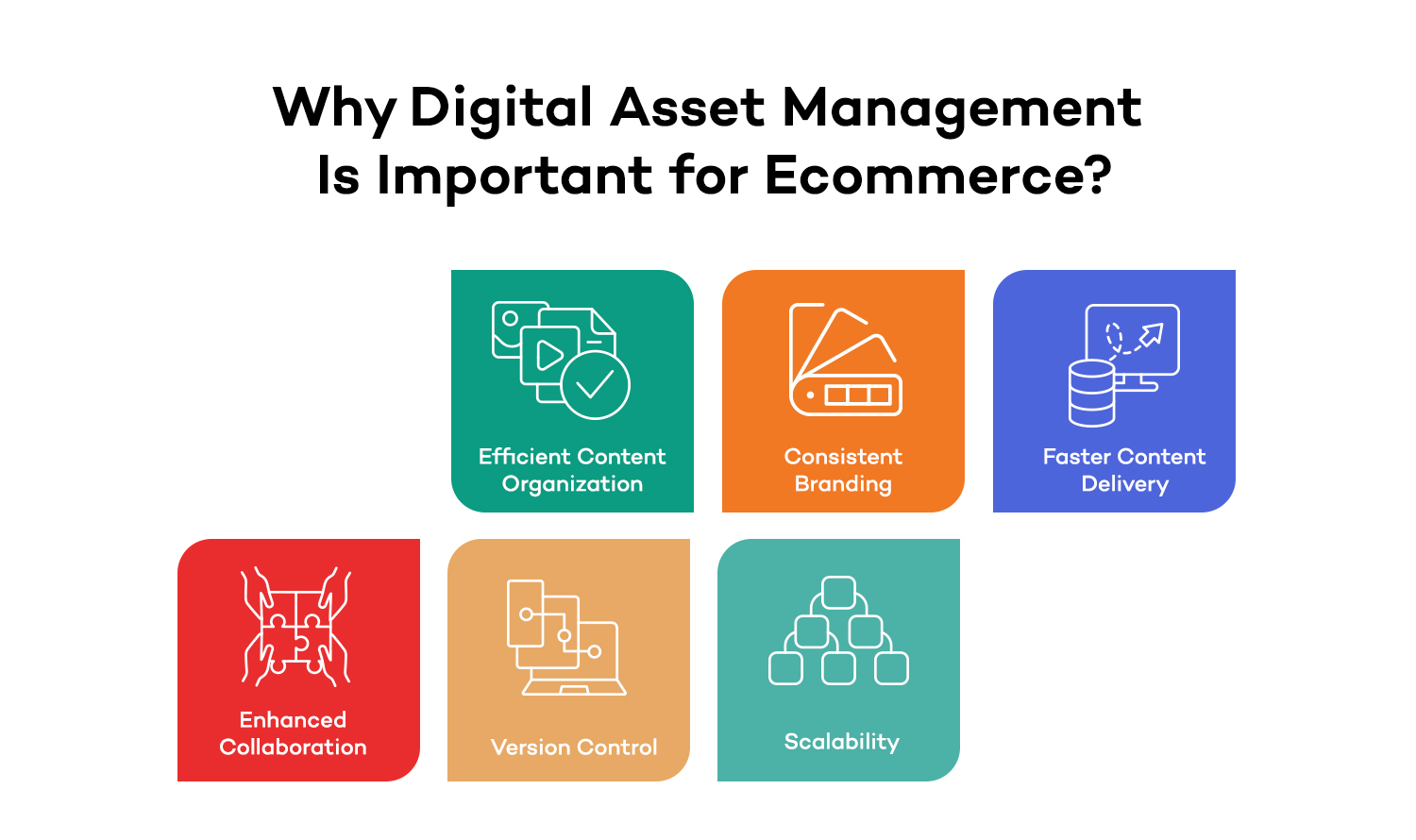In the ever-evolving landscape of ecommerce, where visual content reigns supreme, the importance of Digital Asset Management (DAM) has reached a certain point.
Ecommerce businesses today are not just selling products; they are selling experiences. And these experiences are powered with digital assets — images, videos, product descriptions, logos, and more. Effectively managing and leveraging these assets can be the key to staying ahead in a fiercely competitive market.
From streamlining asset organization to ensuring brand consistency, enabling faster content delivery to enhancing collaboration among teams, DAM has emerged as a must-have tool to optimize every point in the ecommerce journey.
Stay with us and we will take you through what digital asset management is and why it is must have for your ecommerce business.
What is Digital Asset Management?
Digital Asset Management, often abbreviated as DAM, is a comprehensive system and set of practices designed to efficiently organize, store, retrieve, and distribute digital assets within an organization. These digital assets encompass a wide range of multimedia content, including images, videos, audio files, documents, graphics, and more.
At its core, DAM serves as a centralized and secure repository where businesses can systematically manage their vast collection of digital content. This includes the ability to tag, categorize, and annotate assets for easy search and retrieval. DAM systems play a crucial role in maintaining brand consistency by providing a single source of truth for approved and up-to-date digital resources.
DAM also facilitates collaboration among teams and departments by offering version control, workflow management, and user access controls. This ensures that the right individuals have the appropriate level of access to assets, streamlining content creation and approval processes.
Why does your Business Need a DAM system?
When your business has to deal with anything from uploading to publishing and deleting to modifying thousands of digital assets every day you must have a platform where you can easily access these digital assets efficiently. Your team may need to find relevant files to upload or use them in any projects and so on.
This is where digital asset management plays an important role for your business.
In simple terms;
• Your team has upload images of every new product that you add to the catalogue.
• There are many products in which you need to publish relevant product descriptions.
• You have to upload videos that need to be added in the product pages,
• There may be various marketing assets like ads copy, banner, and other visual ads that need to be posted in all your social media handles and other channels.
With a digital asset management, you can take control over your digital assets, speed up the workflow, and position yourself for success in the current competitive digital landscape.
Benefits of Digital Asset Management
Digital asset management holds significance in guaranteeing the systematic organization, version control, and governance of digital assets. This ensures the effective utilization of digital assets within the organization while mitigating potential legal or compliance complications.
Here are some of the benefits of digital asset management:
1. Enhanced Organization & Accessibility
DAM enhances organization and accessibility for ecommerce. With DAM, all your product images, videos, marketing materials, and branding assets are easily accessible.
Its intuitive categorization and tagging streamline content retrieval, saving time, ensuring brand consistency, and improving the customer shopping experience.
2. Improved Collaboration and Teamwork
Implementing Digital Asset Management (DAM) in ecommerce significantly improves collaboration. DAM provides a centralized platform for seamless teamwork, allowing various stakeholders to access and edit assets concurrently. This eliminates the need for time-consuming file sharing and ensures version control.
Enhanced collaboration fosters creativity speeds up projects and elevates content quality. DAM's streamlined collaboration is essential for ecommerce businesses, enabling them to create compelling content, engage customers, and boost sales efficiently.
3. Increased Brand Consistency
DAM systems centralize brand assets like logos, fonts, and style guidelines, ensuring accessibility for all stakeholders. This consistency applies to in-house teams, external partners, and vendors, maintaining brand integrity across customer touchpoints.
DAM empowers retailers to present a cohesive brand identity, enhancing recognition and professionalism.
4. Time and Cost Savings
Implementing Digital Asset Management (DAM) in ecommerce brings significant benefits, including time and cost savings. DAM streamlines asset management, enhancing efficiency and cutting operational expenses. It fosters collaboration, accelerates content creation, and elevates quality, saving time and effort.
DAM also reduces storage needs and automates tasks, like image formatting, reducing labour costs. DAM is a smart investment for ecommerce, boosting operational efficiency and profitability.








.png?h=250&fm=webp)
.png?h=250&fm=webp)
.png?h=250&fm=webp)



.png?h=250&fm=webp)
.png?h=250&fm=webp)
.png?h=250&fm=webp)


.png?h=250&fm=webp)



.png?h=250&fm=webp)
















.png?h=250&fm=webp)

.png?h=250&fm=webp)
.png?h=250&fm=webp)



































































































































.png?h=250&fm=webp)


.jpg?h=250&fm=webp)





 copy.png?h=250&fm=webp)























_ Why do you need one.png?h=250&fm=webp)


























































.jpg?h=250&fm=webp)

.png?h=250&fm=webp)



.png?h=250&fm=webp)

.jpg?h=250&fm=webp)




.png?h=250&fm=webp)









.jpg?h=250&fm=webp)
